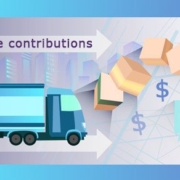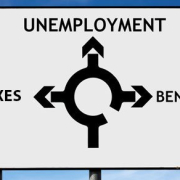Kiddie Tax – What a Parent Needs to Know
- Learn who is subject to kiddie tax
- Understand exceptions and kiddie tax rules
- Learn about parents election to include child’s unearned income on their return
- Understand the strategy to avoid kiddie tax

Introduced in 1986, the Kiddie Tax prevents high-income parents from shifting investment income to their children. While the term “Kiddie Tax” isn’t used in the tax code, it does succinctly describe this tax. The tax applies to unearned income, such as dividends, interest, and capital gains, of certain children under the age of 19, or under 24 if they are full-time students who aren’t self-supporting.
However, if the child is married or neither parent is alive on the last day of the year, the Kiddie Tax rules will not apply to the child and the child will be taxed at their own rate.
For 2023, the first $1,250 of a child's unearned income is tax-free. The next $1,250 is taxed at the child's rate, which is typically lower than the parents' rate. However, any unearned income over $2,500 is taxed at the higher of the child’s tax rate or the parent's rate, which can be as high as 37%. These amounts are inflation-adjusted and for 2024 will be $1,300 and $2,600.
Where a child has earned income (income from working, generally W-2 income) that income is taxed at the child’s marginal rate. However, thanks to the standard deduction, which can offset earned income, and for 2023 for a single individual is $13,850, a child can earn$13,850 tax-free. The inflation adjustment brought the 2024 standard deduction to $14,600.
Earned Income Strategy
The child can contribute to a traditional IRA up to their earned income or $6,500 for 2023. By combining the standard deduction and the maximum deductible IRA contribution, a child could earn $20,350 ($13,850 + $6,500) of wages and pay no income tax. If the child balks at contributing his or her hard-earned money to an IRA, the parents, or grandparents, might consider giving the child part or all of the IRA contribution as a gift. For long-term retirement benefits, it might be better to have the child contribute to a Roth IRA. Even though contributions to a Roth IRA are not tax deductible, all earnings are tax-free at retirement which can be a huge benefit 50 or 60 years down the road.
Sometimes parents elect to include their child's interest and dividend income on their tax return instead of the child filing separately. If the child has other types of income, either earned or unearned, this election cannot be made. Where the child’s parents are not filing a joint return there are some complicated rules related to which parent includes the child’s unearned income on their return. Generally, it would be reported on the return of the parent with the highest amount of taxable income.
The IRS no longer permits children subject to the Kiddie Tax to file their returns using estimated parental tax information. If a child cannot obtain the required information about the parent's tax return, they or their legal representative can request it from the IRS.
Kiddie Tax Avoidance Strategy
It is possible to avoid the Kiddie Tax by placing or moving a child's funds into investments that produce little or no current taxable income. These investments can defer taxes until they are sold or redeemed for education expenses, such as:
- U.S savings bonds – Interest can be deferred until the bonds are cashed.
- Tax-deferred annuities Interest can be deferred until the annuity is surrendered.
- Municipal bonds – Generally produce tax-free interest income (may be taxable to the state).
- Growth stocks – Stocks that focus more on capital appreciation than current income.
- Unimproved real estate – That provides appreciation without current income.
Navigating the complexities of the Kiddie Tax can be challenging. However, with a solid understanding of its implications, you can make informed decisions that align with your financial goals.
Remember, every family's financial situation is unique, and what works for one may not work for another. If you have questions about the Kiddie Tax or need assistance with tax planning, contact a Fiducial office near you. Click here to Request a consultation with a Fiducial Advisor at our office locations.
Know someone who might need our services? We love referrals!









